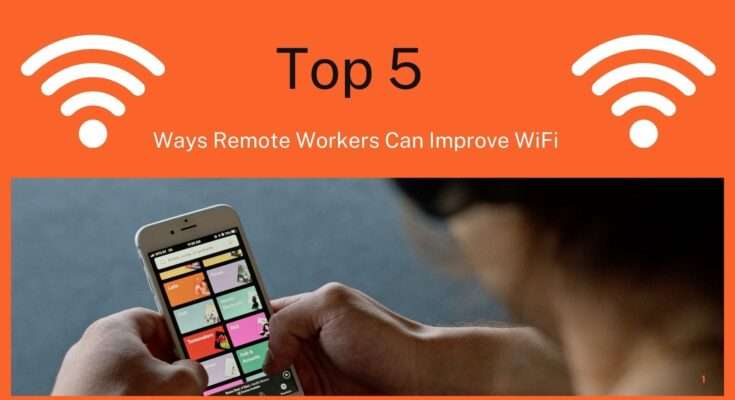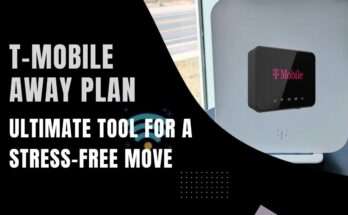Many millions of working professionals worldwide now use remote work as a modern official business practice in this digital era. Workers participating in telecommuting must rely on quick, reliable internet connections to perform effectively during virtual meetings and file transmission. Remote workers face connectivity issues because their internet speed varies due to poor signals and unreliable performance rates. The blog provides an assessed selection of five proven methods to improve WiFi for remote work through network enhancement and provider selection based on workplace requirements.
Internet Service Providers Overview
Internet service providers function as essential providers who establish secure internet connections to serve domestic residences alongside business establishments. The leading Internet Service Providers for 2025 consist of Verizon Fios alongside AT&T Fiber plus Google Fiber and Xfinity and Spectrum, which provide handling facilities through fiber-optic and cable, and satellite links. Verizon Fios gives customers symmetrical speed services up to 2.3 Gbps for $35 monthly, yet AT&T Fiber provides plans reaching 5 Gbps for $55 every month. Customers bring high praise to Google Fiber because of its exceptional speed offerings (up to 8 Gbps). Telecommuters and entertainment enthusiasts will find suitable services among these providers.
- Optimize Router Placement and Settings
The position of routers matters highly when improving remote work Wi-Fi connectivity. You should place your router at a central spot in your home, in a clear position at least one meter above the floor, and separate it from metal items and thick walls that block signals. To boost the home WiFi signal, the update of router firmware should be performed regularly to achieve better system performance and enhanced security measures.
Steps to optimize:
- The ideal location for your router should be in the middle of the room at a height that reaches your chest.
- Electronic interference exists in locations that should be avoided when setting the router position.
- WiFi Analyzer functions as a tool that lets you find the most suitable channel settings.
- Advanced configurations should activate Beamforming and MU-MIMO (Multi-User, Multiple Input, Multiple Output) because they enhance home WiFi signal strength.
- Upgrade Your Equipment
WiFi 6 and 6E standard devices in routers enable substantial improvements to telecommuting network speed. These routers lead to faster connections, together with superior device capability and extended reach among devices to enhance WiFi speed for telecommuting.
Mesh networks would work best if you have a large residence with dead spots. A mesh network creates single-point access by connecting multiple network nodes that are strategically located across your space.
- Use Extenders or Powerline Networking Kits
Wireless network extenders, along with boosters, help strengthen signals that exist in coverage areas with low reception power. Place extenders halfway between your router and the dead zone for optimal performance. Powerline networking kits convert electrical wiring in your home into wired network connections in locations where cables cannot reach.
A set of devices available for less than $100 includes easy installation properties that work well for remote workers who want to boost home WiFi signals at home.
- Manage Network Congestion
Great Network traffic loads during peak times can slow down Internet speed. Your router can opt for queues as a guide for managing the distribution of bandwidth to priority performance work applications, such as video conferencing or cloud storage applications.
Tips for bandwidth management:
- Limit non-essential devices and applications.
- Perform all heavy downloads when network usage is at its lowest point.
- The analysis of overall bandwidth is crucial to enhance WiFi speed for telecommuting, and it requires the implementation of network analysis tools.
- Choose the Right Internet Plan
Proceeding to remote work requires having an ISP that offers internet packages with speeds adjusted for remote work operations. Several excellent insurance plans exist in the year 2025, as listed below:
Internet Service Providers Pricing
| ISP | Plan Name | Speed | Price (Monthly) | Features |
|---|---|---|---|---|
| AT&T Fiber | Internet 300 | Up to 300 Mbps | $55 | Unlimited data, reward card up to $250, ideal for remote work. |
| Internet 500 | Up to 500 Mbps | $65 | High-speed connectivity for streaming and telecommuting. | |
| Internet 1000 | Up to 1 Gbps | $80 | Best for large file transfers and multiple devices. | |
| Internet 2000 | Up to 2 Gbps | $145 | Ultra-fast speeds for heavy usage. | |
| Internet 5000 | Up to 5 Gbps | $245 | Premium plan for advanced users and businesses. | |
| Xfinity | Connect | Up to 150 Mbps | $35 | Affordable plan for basic remote work needs. |
| Connect More | Up to 400 Mbps | $35 | Great for multi-device usage and streaming. | |
| Fast | Up to 600 Mbps | $65 | Reliable speeds for telecommuting and gaming. | |
| Gigabit Extra | Up to 1,300 Mbps | Pricing varies | Ultra-fast speeds for high-demand users. | |
| Spectrum | Internet Assist | Up to 50 Mbps | $25 | Budget-friendly option for basic internet needs. |
| Internet Premier | Up to 500 Mbps | $50 (First Year) | Perfect for remote work and streaming. | |
| Internet Gig | Up to 1 Gbps | $70 (First Year) | High-speed plan for seamless telecommuting and entertainment. | |
| Verizon Fios | Fios 300M/300M | Up to 300 Mbps | $49 | Symmetrical speeds are ideal for video conferencing and file sharing. |
| Fios 500M/500M | Up to 500 Mbps | $69 | Reliable speeds for families or small home offices. | |
| Fios Gigabit Connection | Up to 940/880 Mbps | $89 | Best for heavy internet usage and multiple devices. | |
| Cox Communications | Go Faster | Up to 250 Mbps | $70 | Affordable plan for remote employees with moderate internet needs. |
| Go Even Faster | Up to 500 Mbps | $90 | High-speed connectivity for busy households or offices. | |
| Go Super Fast | Up to 1 Gbps | $110 | Premium plan for seamless telecommuting and gaming. | |
| Go Beyond Fast | Up to 2 Gbps | $150 | Ultra-fast speeds designed for advanced users or businesses. |
AT&T Internet Plans
- Internet 300: Up to 300 Mbps at $55/month.
- Internet 500: Up to 500 Mbps at $65/month.
- Internet 1000: Up to 1 Gbps at $80/month.
- Internet 2000: Up to 2 Gbps at $145/month.
- Internet 5000: Up to 5 Gbps at $245/month.
AT&T provides remote work clients with up to $250 reward cards, which are available when they sign up for wireless plans.
Xfinity High-Speed Internet Packages
- Connect: 150 Mbps at $35/month.
- Connect More: 400 Mbps at $35/month.
- Fast: 600 Mbps at $65/month.
- The service speed for Gigabit Extra reaches up to 1,300 Mbps, with pricing options available.
Customers of Xfinity Internet can obtain affordable internet packages, and they can combine their internet service with TV or mobile communications options.
Spectrum Internet Deals
Spectrum Internet offers specialized deals for home offices:
- Internet advantage – up to 100 Mbps for $30 per month (first-year pricing).
- Internet premier – up to 500 Mbps for $50 per month (first-year pricing).
- Internet gig – up to 1 Gbps for $70 per month (first-year pricing).
Also available are less expensive plans like Internet Assist (80 Mbps for $15/month), so remote workers can have access to it as well.
Verizon Fios Internet
Verizon Fios supplies fiber-optic Internet plans with reliable speeds suited for telecommuting:
- Fios 200M/200M: Symmetrical download and upload speeds at competitive prices.
- Fios 500M/500M: For heavy streaming and data transfer.
- Fios Gigabit Connection: For large file transfers and video conferencing up to speeds of 940/880 Mbps.
- Fios 2 Gigabit Connection: Offers up to 2048 Mbps in select coverage areas.
All in all, Verizon Fios Internet delivers low latency and high reliability, perfect for those Zoom calls and large file transfers.
Cox Internet Service
The plans available from Cox Internet service are not stationeries and work very well for employees working from home:
- Go Faster: Up to 250 Mbps for $70/month.
- Even Faster: Up to 500 Mbps for $90/month.
- Super Fast: Up to 1 Gbps for $110/month.
- Go Beyond Fast: Up to 2 Gbps for $150/month.
Cox’s plans come with panoramic Wi-Fi and advanced security tools.
Conclusion
Home networking can be expensive and complicated, but it doesn’t always have to be. Optimize your router placement by upgrading the old one, managing congestion, utilizing extenders or powerline kits, and getting the correct ISP plan for your remote work needs. Find ISPs like AT&T Internet plans suitable for remote work, Spectrum Internet packages for your home office, Verizon Fios Internet deals, and Cox Internet offerings for the best fit. This way, you’re remote workers have unfettered productivity in their home offices while staying somehow connected! To know more about Internet plans, get in touch with the Internet Cost Saver customer care number: +1(855) 208-9742.



